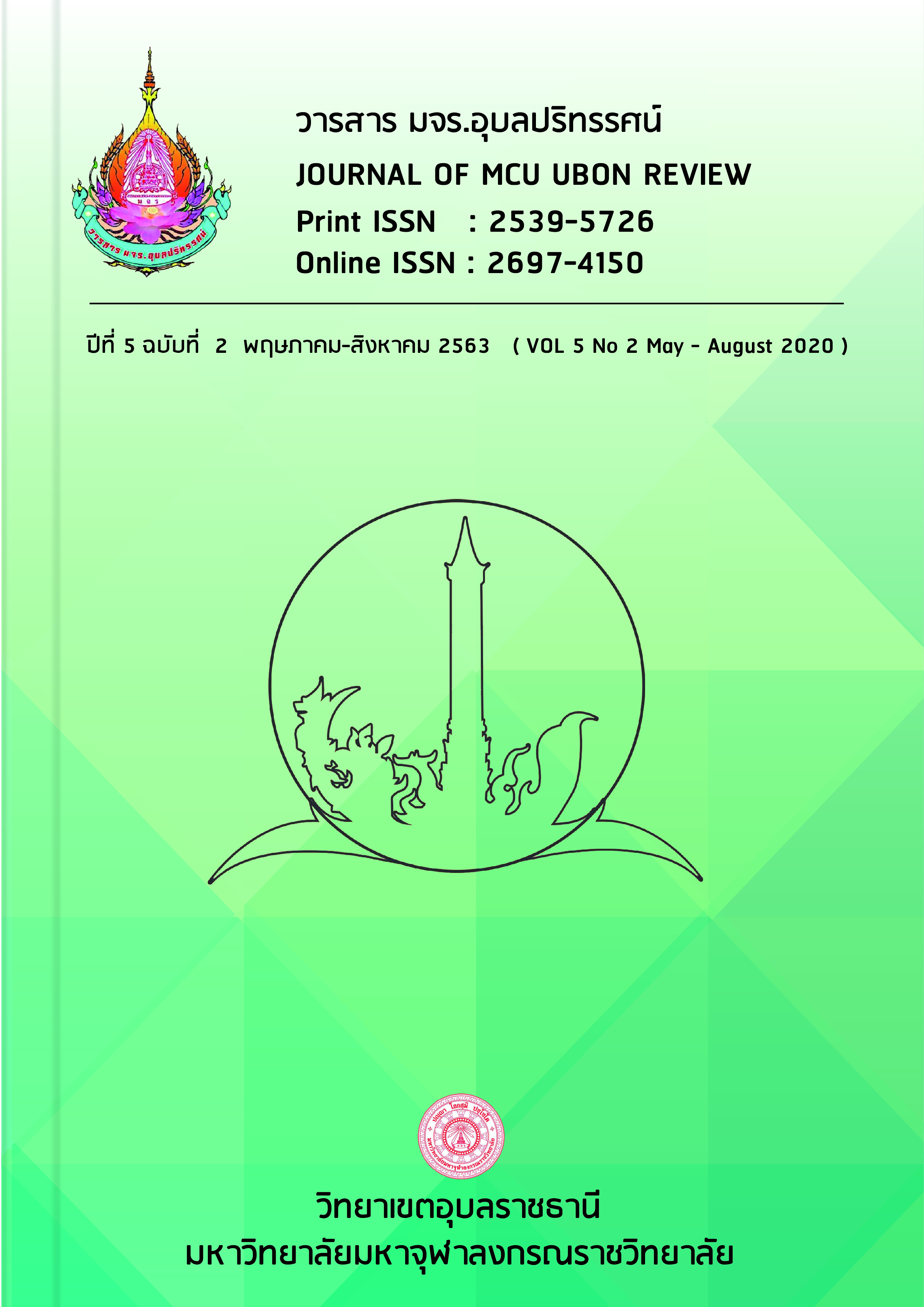A Model of Palm Leaf Manuscript Conservation of Temples and Communities in Thailand through Cultural and Technological Processes
Main Article Content
Abstract
This research aims to: 1) to study processes of palm leaf manuscript conservation of temples, communities and academies in Thailand; 2) to develop a model of palm leaf manuscript conservation of temples and communities in Thailand through cultural and technological processes ; and 3) to study ways to build palm leaf manuscript conservation network of temples and communities in Thailand through cultural and technological processes
This research was employed by the documentary research to build in-depth interviews, qualitative methods and participation action with list model research. It started with in-depth interviews of 25 purposive samples from 16 administrators and staffs concerned with 8 organizations of palm leaf manuscript conservation of temples, communities and academies in Thailand and 9 experts. It used a model of palm leaf manuscript conservation of temples and communities in Thailand to operate in Sungmen temple community, Sungmen District, Phrae Province according to the LIST model action research : Learning, Innovation, Sustainable and Transformation and then built the network of conservation at Rongfong temple community,Mueng District, Phrae Province according to Sungmen Model. The data analysis of this research was used by Analytic Induction
The research findings were as follows:
1) Concerning the processes of palm leaf manuscript conservation of temples, communities and academies in Thailand, it was found of three steps as follows : 1) Before conservation, it was to build faith, to set the system to train the personals and to start with Buddhist permission ceremony; 2) Conservation, it started with surveying, cleaning, classifying, registering, digitizing, making registration, wrapping cloth and labeling code of manuscript and finally keeping manuscripts in the appropriate room with forgiveness ceremony or also manuscript keeping ceremony; 3) Sustainable Conservation, it was to build learning resources , to spread the knowledge, to build network, to create the praising system, to evaluate and to preserve with the cultural process
2) Regarding to develop a model of palm leaf manuscript conservation of temples and communities in Thailand through cultural and technological processes, it was found of five steps according to Sungmen Model as follows : 1) To build the faith (Right View) , it was to teach Belief sets for people to realize correctly the right importance of palm leaf manuscript conservation; 2) To set the System of data and working processes (Precept), it was the management in form of manuscript committees organization to make a yearly plan and also to train the personals; 3) To act the conservation (Meditation), it started with announcing the manuscript conservation as Buddhist merit activity and then began with permission ceremony and followed to technological processes as follows: All operators wearied the hygienic groves and mask, taking pictures of manuscripts before surveying, cleaning the manuscript storage, surveying and classifying manuscripts, arranging palm leafs, cleaning manuscripts, cataloging ,registering, digitizing, making the manuscript registration, wrapping the manuscripts with cloth and then wearing code labels with each manuscript, and keeping manuscripts in the appropriate room with forgiveness ceremony and also Buddhist invitation ceremony for keeping manuscripts in the room ; 4) To build the learning resources (Wisdom) ; and 5) To expand for sustainable conservation (Kindness), it was : to spread the knowledge , to build the network, to create the praising system, to evaluate and to preserve the conservation : to produce Buddhist heirs of manuscript conservation and to hold the manuscript conservation activity for motivating the community have faith in palm leaf manuscript conservation sustainably.
3) As for the ways to build palm leaf manuscript conservation network of temples and communities in Thailand through cultural and technological processes , it was found that there were 5 ways of building the network of palm leaf manuscript conservation as follows : To sign MOU ( MOU network) , to invite experts or related people as committee (Committee network), to apply as a member of network (Membership network), to form a group as self network ( Self- established network) and to be a private network (Private network) and also found that there were 17 ways of preserving lasting the network namely : To participate each other in the events, to maintain friendship, to organize the events together, to share the roles of development, to be fair for sharing the benefits , to make a plan and a standard for working together, to encourage and help together, to respect, to trust, to be sincere, to be honest, to sacrifice, not to take advantage of each other, to accept the differences of one another, to accept the freedom of organization, to build the system of motivation, to create the praising system, to produce the heirs to preserve the network, to manage with the committee , there were the coordination center and also the coordinators, there was budgets enough for managing and finally to evaluate and sum up fairly the result of network working together.
Article Details
References
โครงการ Tipitaka (DTP), ความรู้รอบตัว/อนุรักษ์คัมภีร์ใบลานไทยรักษาไว้ให้แผ่นดิน.html,
http://www.dmc.tv/pages/ [ 3 พฤษภาคม 2562].
ประสิทธิชัย เลิศรัตนเคหกาล, (2559). การพัฒนารูปแบบการจัดการคัมภีร์ใบลานในประเทศ
ไทย, บัณฑิตวิทยาลัย : มหาวิทยาลัยสุโขทัยธรรมาธิราช,
สถาบันอนุรักษ์คัมภีร์ใบลาน วัดสูงเม่น, (2559), เมืองคัมภีร์ธัมม์โบราณ มรดกธัมม์ มรดก
โลก วัดสูงเม่น. ศูนย์สยามทรรศน์ศึกษา คณะศิลปะศาสตร์ มหาวิทยาลัยมหิดล : ไทยอุตสาหะการพิมพ์.
พระมหาสุทิตย์ อาภากโรและคณะ, (2558). การจัดการความรู้ทางวัฒนธรรมในประเพณี
ตากธรรมของวัดสูงเม่น จังหวัดแพร่. รายงานการวิจัย. สำนักงานคณะกรรมการ
วัฒนธรรมแห่งชาติ กระทรวงวัฒนธรรม.
สมัย วรรณอุดร, (2559). คัมภีร์ใบลานกับกระบวนการสร้างศูนย์เรียนรู้ชุมชน ด้านเอกสาร
โบราณวัดศรีจันทร์ ชุมชนบ้านนาอ้อ อำเภอเมือง จังหวัดเลย, รายงานการวิจัย :มหาวิทยาลัยมหาสารคาม.
Boissevain, Jeremy and J.Clyde Mitchell, (2015), How to be Networks : Studies
in Human Interaction, (Netherlands : Mouton & Co, P.54.
Starkey, Paul, (1997), Networking for Development, IFRTD (The International
Forum for Rural Transport and Development London P.67-68.

